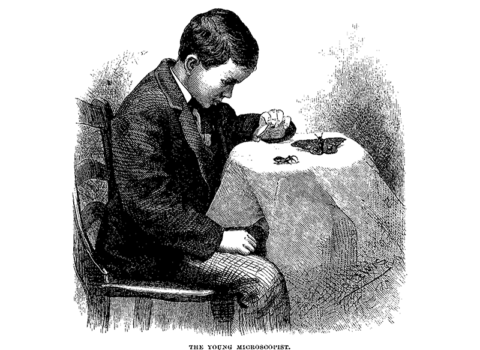The Authentic Left
Ever since the online publication of “the Harper’s letter”—a public stand against political correctness and “cancel culture” in the United States signed by 153 prominent writers, scholars, and other professionals—I’ve been disturbed by imprecise, even twisted definitions of “the progressive left.” Of course, I realize that there’s a sharp division between the people who organized the appeal for liberal tolerance contained in the letter and those who seek to punish people who exhibit insufficient belief in radical solutions to the historical injustices suffered by Blacks, women, gays, and others. Each faction presents itself as constituting the authentic left, and the conflict will continue long after the November election.
That said, there’s one frankly idiotic contradiction blurring the parameters of this violent debate—a contradiction that obscures, in a country excessively proud of its First Amendment rights, the reality that debate is often limited. As it is, the bitter argument over intolerance on the left isn’t new; this latest phase goes back three years, to the sordid revelations about Hollywood producer Harvey Weinstein and the worst excesses of the #MeToo movement. Nevertheless, a veritable tornado was unleashed in May when the New York Times published on its website an opinion piece in which Tom Cotton, a right-wing senator from Arkansas and an avid Trump supporter, called for federal troops to put down the riots that had broken out after the police killing of George Floyd in Minneapolis. Faced with an unprecedented revolt by the paper’s reporters and eager to show that they were “woke” on the subject of racism, the management of the Times canceled the print publication of Cotton’s piece and fired the editor responsible for the editorial and op-ed pages, James Bennet. I think the Times was wrong to do so; Bennet was fulfilling his duty to publish, in the name of liberal democracy, divergent opinions, even those that contrast with his paper’s anti-Trump editorials.
What’s important here is not so much the cowardice of the Times in the face of a grumbling staff but rather a failure to acknowledge, either by the public or the Times itself, this iconic journal’s historic political orientation. Center-left and generally aligned with the Democratic Party, the Times has traditionally boasted of its “objectivity” and has always shown deep respect for the presidency, no matter which political party holds it. Securely plugged into sources of power in Washington, the “newspaper of record,” in the course of the past several decades, has in several instances suppressed secret information at the request of a president, allegedly for reasons of national security. With the arrival of a clown in the White House in 2017, the Times found itself in an uncomfortable fix: how to respect a president who himself respected neither the rules of the game nor the established press. The Times eventually concluded that Trump no longer deserved the deference due to his office, and the paper began to side, sometimes hysterically, with the opposition.
But that has nothing to do with a real left-wing position. Throughout the Democratic presidential primaries, the Times displayed contempt for the genuine left-wing candidate, Bernie Sanders, and pushed for a more “moderate” choice. The attack on Sanders peaked with the paper’s report, published on March 5, recounting Sanders’s trip to the Soviet Union in 1988, while he was mayor of Burlington, Vermont, and seeking to establish a sister-city partnership with Yaroslavl, a city on the Volga River northeast of Moscow. Such an attempt at cooperation was by no means extraordinary in the midst of glasnost and warming relations between U.S. President Ronald Reagan, an arch anticommunist, and Soviet leader Mikhail Gorbachev. According to the Times, the Soviet Union wished to exploit Sanders, who identifies as a social democrat, for the sake of “propaganda”—imagine the horror!—so the paper portrayed him as a dupe of the wicked communists. This anti-Sanders propaganda was published following statements made by the former mayor of New York, Michael Bloomberg. During the February 19 Democratic debate, Bloomberg, a billionaire and a darling of the Times, had in effect accused Sanders of being a communist. It goes without saying that the Times neglected to criticize this low blow by Bloomberg.
The reputation of the Times as a left-wing newspaper has led it to make some absurd efforts in justifying its new status as a progressive beacon—for example, by publishing July 5 a supplement titled “The Economy We Need: How to save democracy from capitalism and save capitalism from itself.” Over the course of sixteen pages deploring the growing gap between the rich and the rest, the paper’s editorial committee strives to explain the origins of this appalling societal fracture. Among the numerous banalities and platitudes, endorsed by the economist and opinion writer Paul Krugman, what’s most striking are the omissions. Nowhere is there any reference to the free-trade agreements negotiated by President Bill Clinton, a Democrat, which encouraged the relocation of millions of industrial jobs to Mexico and China. Nowhere is there a discussion of the deregulation of the financial sector and the neoliberal reforms promulgated by Treasury Secretaries Robert Rubin and Lawrence Summers, both part of that same Democratic administration. No mention is made of the Democratic Leadership Council, organized in the 1980s with the aim of moving what had been a pro-labor party to the right and separating it from its unionist base.
All this is the work of a newspaper that is neither leftist nor progressive. Erasing history in the name of progress and bringing down social democrats is work that could be described as Stalinist. And yes, Stalin considered himself a man of the left.



